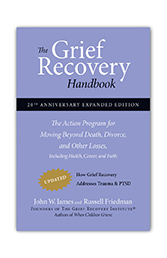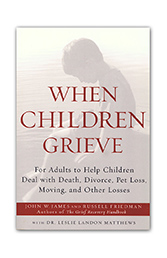Have you heard this one?
"Laugh, and the world laughs with you; cry, and you cry alone"
How about these phrases:
- “If you’re going to cry go to your room”
- "Knock off that crying or I'll give you a reason to cry"
- “Big girls don’t cry”
Those sayings convey a clear message to children: happy feelings are acceptable while sad feelings are not. Children are taught there is something wrong with them if they are sad.
What's the problem?
Think about the young children in your life. They probably laugh when they are happy and cry when they are unhappy, right? They have no problem showing whatever feelings they are having in the moment. That is their nature and it’s normal.
Children are shaped by what they see and hear from the adults in their lives, and what they see on TV and in movies. By the time a child is 3 years old, he or she will have observed and stored 75% of the information they will know for life. That number jumps to 95% by adolescence.
Adults pass on what they were taught about dealing with sadness, without pausing to think if it’s helpful to children. When adults discourage kids from crying, or talking about negative feelings, kids quickly figure out that happy feelings are acceptable, while sad ones should be avoided.
The problem is, hiding normal, sad feelings will limit their capacity for happiness.
What’s the Solution?
- Stop using phrases that discourage sad and painful feelings.
- When a child cries ask, “What happened?” then listen.
- Be a safe person for your child to talk to when he or she is sad.
- Teach by example. If you need to cry do it in front of them.
- Agree with their sadness.
- Share your own experiences.
For example, the next time you see a kid fall down and scrape his knee try saying something such as,
“Ouch, that must hurt! I remember when I was your age and scraped my knee it felt awful.”
If your child comes home from school and starts crying ask, “what happened?” Listen to his answer, without interrupting. When he is done talking say something like, “You must feel so sad”.
When you are sad about something it’s okay to let your child know that you’re feeling a sad. They will learn from your example.
If you want to learn more ways to empower children with positive, effective methods for dealing loss and sadness please grab a copy of When Children Grieve: For Adults to Help Children Deal with Death, Divorce, Pet Loss, Moving, and Other Losses
You may also find this article useful, Bereaved Children, 5 Ways Our Book Can Help























Comments
julie
But what if they are crying accompanied with bad behavior? If I scold my son for not sharing and take a toy away, he'll start crying and having a fit. At that point, is it okay to make him go have a fit in the room and come out when he's done crying?
Add new comment